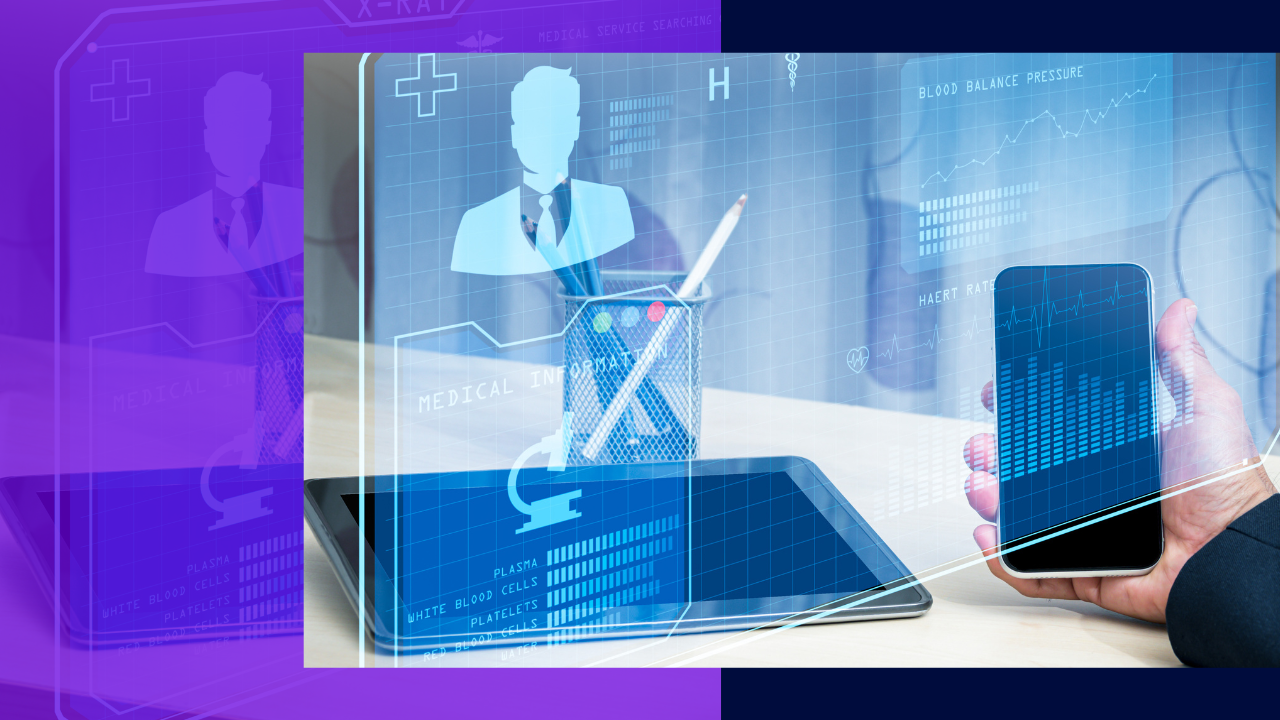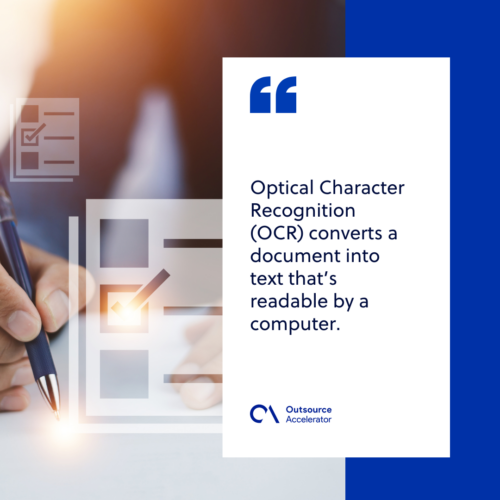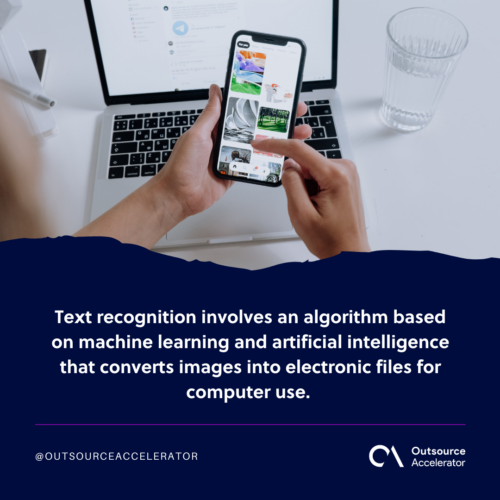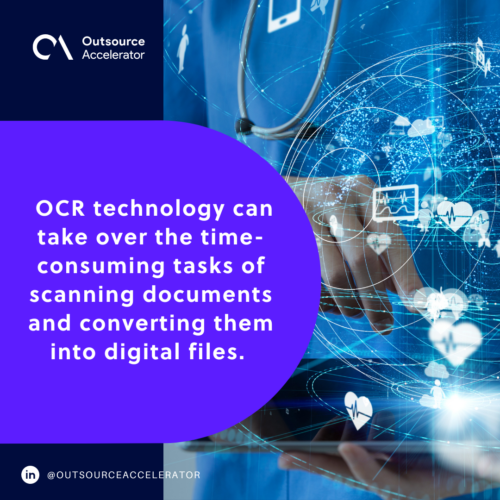The transformative power of OCR technology

Businesses and industries are continuously seeking new ways to streamline operations. A notable development that has emerged in the realm of data processing is OCR technology.
OCR technology can be a transformative power in extracting and manipulating textual content.
In a world where information is abundant, and data management is paramount, OCR software has much more of a place than we realize.
What is Optical Character Recognition (OCR) technology?
Optical Character Recognition (OCR) converts a document into text that’s readable by a computer. The term “OCR” also refers to the entire scanning process that produces the output files used by the software.
OCR technology uses software that identifies characters within an image and converts them into text. The software allows computers, programs, and machines to read scanned documents or images that are printed in a language or script they do not recognize.
Today’s most common use of optical character recognition is scanning documents and converting them into PDF files. These files are searchable and can be easily edited in desktop applications.

- 2000s-present – OCR technology would continue to advance with the introduction of new machine-learning algorithms and improved hardware.
How does OCR technology work?
The process of OCR technology consists of the following steps:
Image acquisition
The first step in the optical character recognition process is acquiring an image of a document. This is done through scans or photographs.
The quality of an image is critical for accurate recognition. In some cases, using multiple images of a single document may be necessary if an individual image doesn’t provide sufficient coverage.
Pre-processing
Next, OCR technology prepares the image for analysis. This involves removing “noise” or artifacts from the image.
“Noise” can include color variations within a single pixel or jagged edges caused by poor scanning equipment.
Pre-processing also involves:
- Correcting distortions.
- Cropping the document to remove unwanted areas.
- Determining which parts of the image contain text.
Text recognition
The most essential step in OCR technology is converting the image to text. This process involves an algorithm based on machine learning and artificial intelligence that converts images into electronic files for computer use.
The algorithm looks at every pixel of the image file and compares it with other pixels. It then creates a dictionary of all possible characters that have been found in any part of the image. This allows it to extensively identify each character to convert to text.
The result is a text file with a large amount of data that can be searched, edited, and printed by other programs.
Text recognition is not an easy task. Optical character recognition algorithms must be able to distinguish between letters, numbers, and other characters in order to perform accurate recognition tasks.
Post-processing
The current output of OCR technology is a raw text file. This file is still not suitable for further processing or analysis. The text still needs to be processed so humans and machines can easily understand it.
Post-processing cleans up any errors and additional noise from the converted text to ensure an error-free result.

Types of OCR technology
OCR technology encompasses different types, each tailored to specific needs and challenges. Understanding these types is crucial in selecting the right OCR solution for your requirements.
Simple optical character recognition (OCR)
Simple OCR technology is the most widely used method for converting visual documents into electronic files.
It’s inexpensive, fast, and compatible with many different printed materials, such as magazines, books, and newspapers.
Simple OCR software doesn’t require any special training or expertise to operate. This feature makes it ideal for small businesses that need to convert large volumes of paper documents on a regular basis.
A scanner or camera captures an image from a document and then performs a series of calculations in order to determine what characters appear in it. The results can be good enough for many purposes but may not be completely accurate.
Intelligent character recognition (ICR)
Intelligent character recognition uses pattern recognition capabilities to identify text in images.
The term “intelligent” refers to its ability to recognize characters regardless of font or style. This even extends to handwritten letters.
This OCR technology system typically uses proprietary algorithms and libraries. ICR technology can be broken down into three main components:
- Feature extraction, which derives details from a file
- Classification into characters or noise based on their appearance and properties
- Matching to determine where each character appears on a page
Intelligent word recognition (IWR)
This type of OCR technology can identify entire words within an image and place them in a document. It does this by analyzing each letter in the word for its placement and then determining whether it belongs in one word or another.
Intelligent word recognition is also able to identify punctuation within words.
IWR is the most accurate and reliable OCR technology. It uses a combination of pattern matching, artificial intelligence, and machine learning to examine text.
It’s also the most powerful of the OCR systems, capable of recognizing most fonts and languages.
Optical mark recognition (OMR)
Optical mark recognition is a form of OCR technology that enables the ability to scan and read marked data on physical mediums like cards, checks, invoices, claims, and forms.
The marks may be handwritten numbers or letters or printed on the surface of the document. OCR technology decodes these marks into a machine-readable format.
OMR software reads these marks directly off the paper without having to make contact. This reduces wear and tear on both the original document and the OCR reader itself.
This OCR technology is frequently used to convert paper documents into digital records.
Benefits of OCR technology
OCR technology is quite versatile and comes with numerous benefits:
- Increases efficiency – OCR technology can take over the time-consuming tasks of converting scanned documents into digital files. This frees up employees to do other tasks within your company.
- Saves space – Because your files will be electronic, OCR technology saves you money on physical storage space, equipment, and supplies. This also increases the longevity of your files, as they won’t be threatened by fire or water damage.
- Easily accessible information – OCR technology allows you to find information quickly and efficiently by simply entering keywords into its search engine.
- Faster data entry – OCR technology eliminates the need to enter data manually. All you need to do is scan documents into your computer system, and the software does the work for you.
- Improves accuracy and consistency – Since all letters are converted to text, there won’t be any need for manual correction or editing. OCR technology ensures that documents are always properly processed with minimal errors or discrepancies.

Applications of OCR technology
OCR technology has revolutionized data entry and document processing. Its applications span a wide range of industries, offering unparalleled benefits.
OCR technology in business
Businesses use OCR technology to process documents for archiving or extracting data from them for further processing. This can include agreements, invoices, and other documents that must be stored electronically.
Many companies also use it for financial reporting, data entry, and payroll management. Further applications like customer service, inventory management, and order processing are being researched for adoption in the business world.
OCR technology in education
OCR technology is becoming an important part of the education industry. Students can use it to search for information, while teachers can use it to analyze documents.
With OCR technology, it’s become much more efficient for students to find research papers, articles, and other materials online. It also saves time from copying text into word processing programs.
OCR technology in healthcare
OCR technology in healthcare can be used for a wide range of applications, including medical records, medical billing, and electronic medical documentation.
In addition, OCR technologies can be applied to drug discovery and development programs to identify new drugs and their side effects.
OCR technology in finance
OCR technology has already been in use in the banking industry for quite some time.
Bank employees use the software to process checks and other forms of payment, verifying that they’re properly endorsed before crediting them to your account balance.
OCR technology can also handle money transfer services and insurance claims processing. The technology scans forms and processes the information to serve you.
OCR technology in logistics
In the world of logistics, OCR technology is used to improve the quality and speed of information. It can read barcodes and packaging labels, convert photographs into text, and even convert handwriting.
The ability to quickly scan packages and identify their contents can help reduce the amount of time spent at each step. OCR technology is also seen to improve security in logistics by using barcodes as a form of authentication.
OCR technology has undeniably revolutionized the way we digitize valuable textual information.
As we look ahead, the potential of OCR technology to reshape industries and optimize workflows is limitless.







 Independent
Independent




